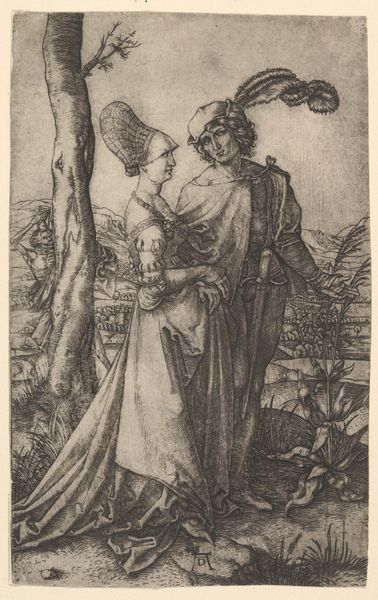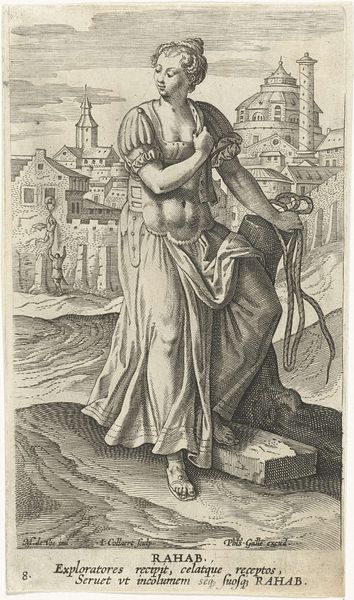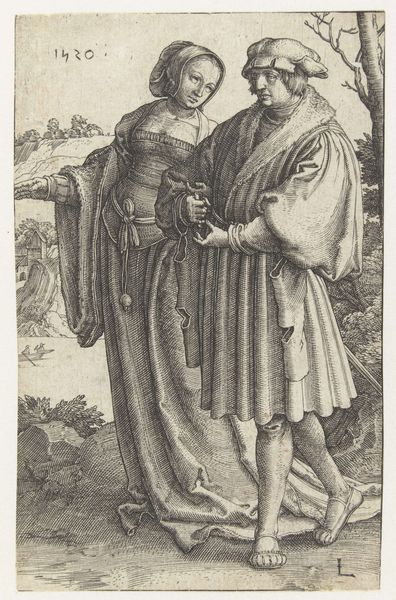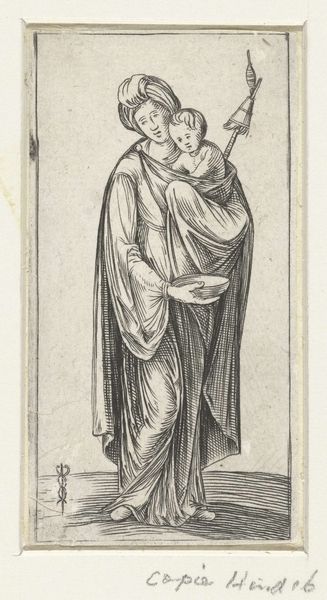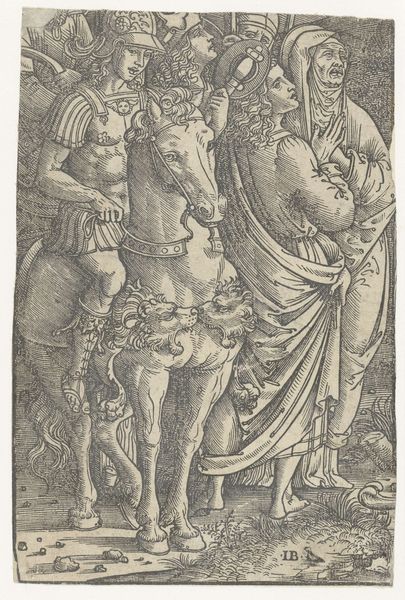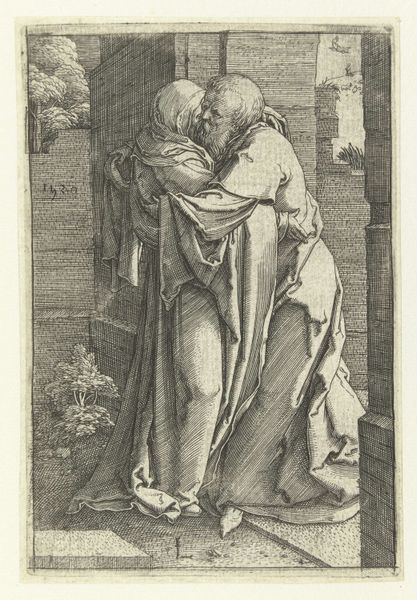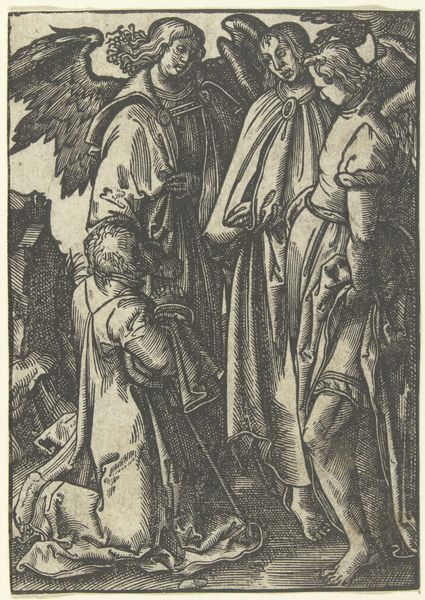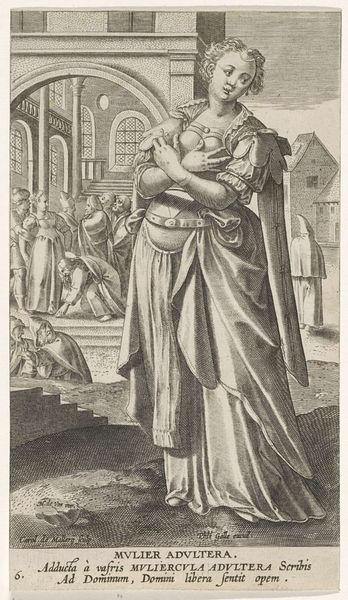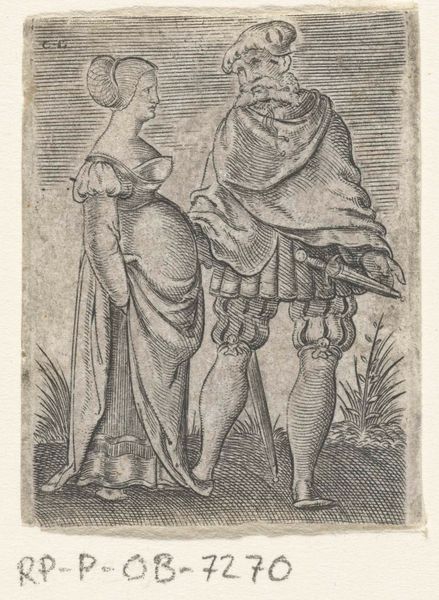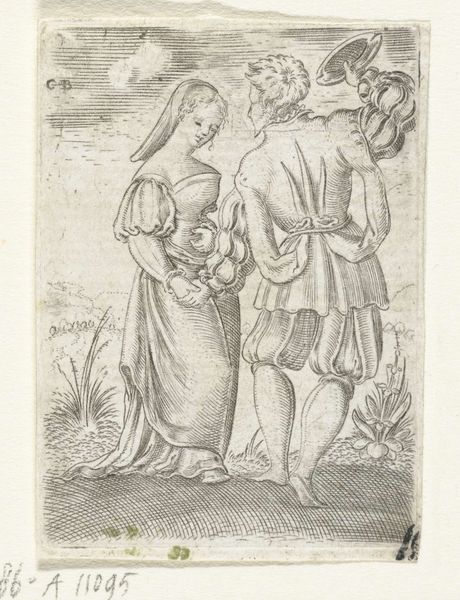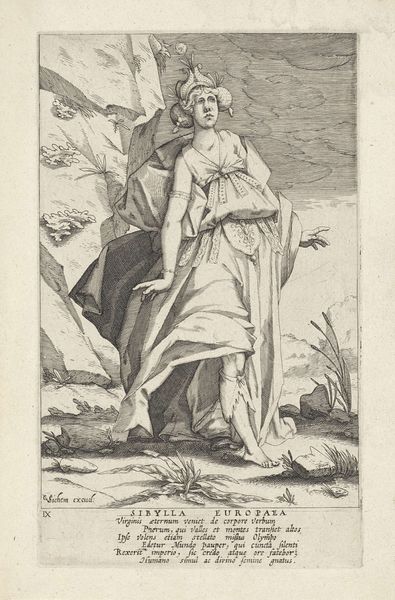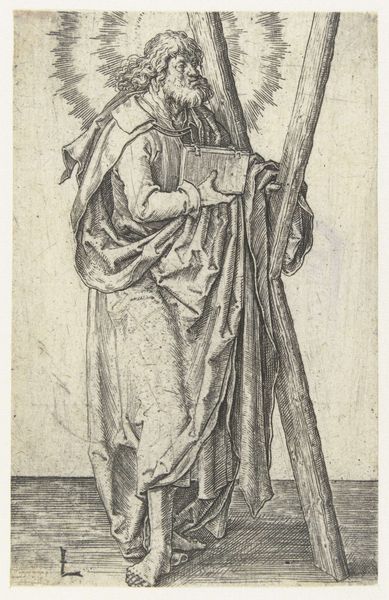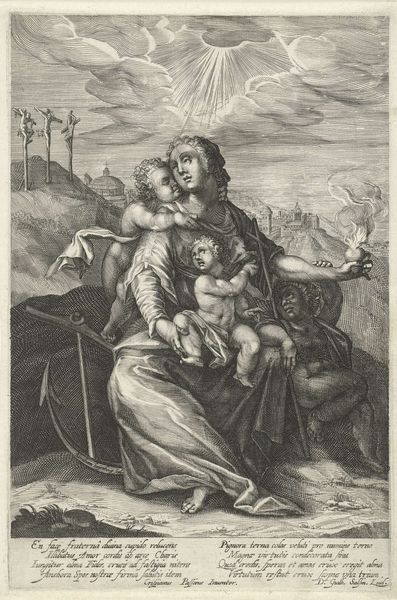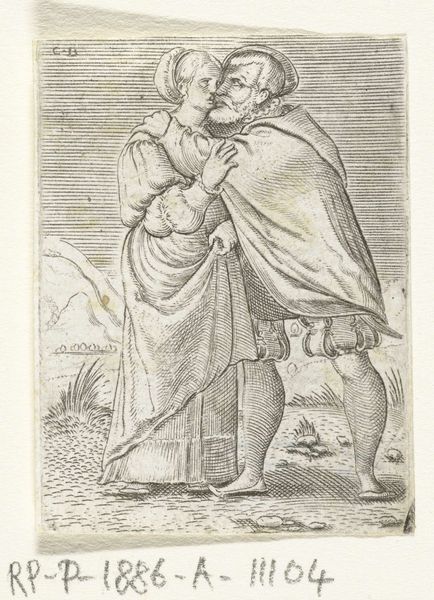
engraving
#
portrait
#
figuration
#
line
#
history-painting
#
northern-renaissance
#
dress
#
engraving
Dimensions: height 185 mm, width 116 mm
Copyright: Rijks Museum: Open Domain
Curator: This engraving, “Jong paar en de Dood,” created by Israhel van Meckenem between 1455 and 1503, offers a fascinating look into late medieval anxieties surrounding mortality. Editor: It strikes me as remarkably stark, even grim. The fine lines, rendered in such detail, make the scene feel… well, rather unsettling, doesn’t it? Curator: Absolutely. Meckenem masterfully uses line to underscore the themes of morality. Consider the meticulous rendering of the couple’s clothing, signifying status, contrasted against the roughly sketched Death figure lurking in the background. Editor: Yes, I’m particularly drawn to the couple's garments. The detailed layering and fabric texture were important aspects of material wealth. Death looks less of this world than this world itself. Curator: Precisely. This speaks volumes about the societal values and the ephemerality of earthly possessions. We can contextualize this with other Memento Mori artworks produced in the same era. Death becomes a great leveler in society and the human existence regardless of what you own. Editor: The very nature of engraving – the laborious process of etching, printing, and distributing these images– suggests a real hunger for mass production within early Northern Renaissance culture. The relative affordability meant people could literally hold such anxieties about life, death, love, and money. Curator: Moreover, let’s not ignore the overt symbolism. The couple, oblivious or perhaps knowingly resigned, exist adjacent to a skeletal Death—a stark reminder of human vanity in the face of inevitable mortality. These symbols tie into broader narratives of morality plays that focus on the intersectional tensions present in late medieval life and its conclusion. Editor: So true. The labor that’s visualized both within the making of this image, and also represented inside the frame makes me reflect upon our cultural relationship with both pleasure and the macabre. This is particularly evident when considering the labor needed to obtain material luxury. Curator: A poignant intersection of life and labor, and art mirrors social anxieties. It remains a powerful testament to our ever-present mortality. Editor: And it shows how art-making both drives and displays cultural meaning with lines!
Comments
No comments
Be the first to comment and join the conversation on the ultimate creative platform.
